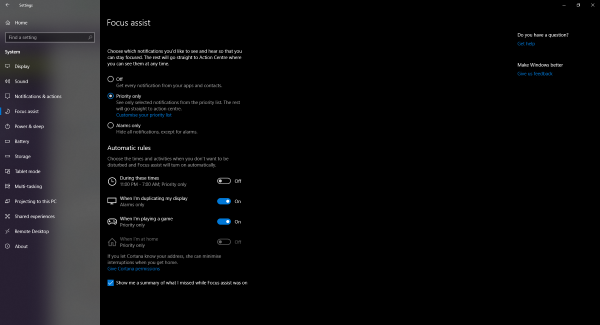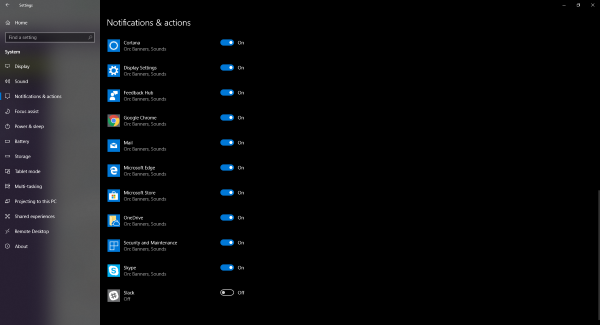Do you dislike too many notifications on your Windows 10 computer? Some of them are important, but most of them are not required. Windows 10 introduced this concept of notifications, and now almost any application that you have installed can send you one. If you do not like excessive notifications on your computer, there are quite a few ways to disable them. In this post, we will talk about reducing the number of notifications you get on your computer.
How to disable App Notifications on Windows 10
Focus Assist

If you want to disable notifications completely, you should use Focus Assist. It is a recent addition to Windows and lets you control the level of notifications that you get. You can disable all notifications except the ones from priority apps. You will have to maintain a list of priority applications. Or you can simply disable all notifications except some important ones like alarms.
You can also set up automatic rules, such as Focus Assist timings. For example, you can enable Focus Assist for a certain period during the day, when you are duplicating your display, or when you are simply playing a game.
Related: How to turn off App Notifications using Registry Editor.
Disable Notifications for an application
Is there an application that is spamming you with notifications? Well then, you can also disable notifications for that application. Windows gives you very fine control over what notifications you want to get. To disable notifications for an app, head over to Settings and then into System. Open Notifications and actions and scroll down to a section that says Get notifications from these apps.
Now find the application for which you want to disable notifications and click the toggle corresponding to it. You can also click open to explore more settings about that particular application.
You can disable notifications or just the notification banners. You can also control the notification sound and its behavior on the lock screen. Lastly, you can adjust the number of notifications displayed in the Action Centre or decide the priority of the selected applications.

As I mentioned, Windows gives you very fine control. You can customize every corner of the notifications part on Windows. Very similarly, you can change notification settings for other applications. You can selectively enable a few applications and disable notifications for one.
Other than that, there are a few other notifications-related settings that you can adjust. You can disable notifications about tips, tricks, and suggestions that you might get when you use Windows. Or you can disable notifications on the lock screen. Or you can even disable summary notifications from Windows Defender. So that was pretty much about disabling notifications on Windows 10.
Related: